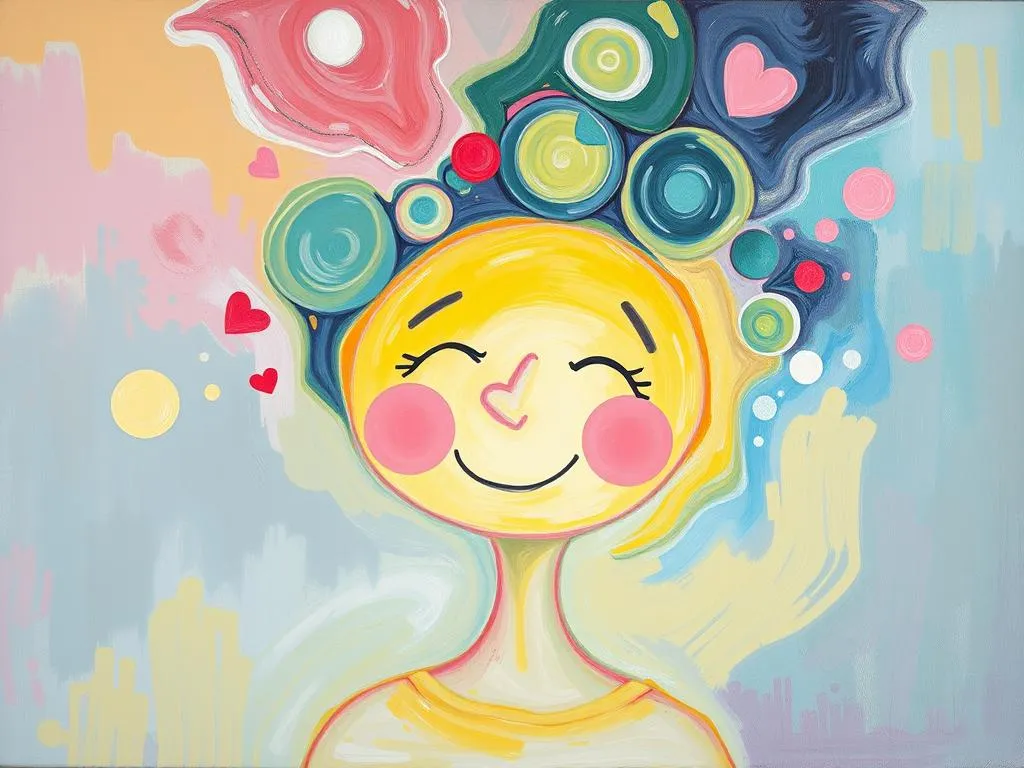
Introduction
Dreams have long captivated the human imagination, serving as a window into the unconscious mind. Among the myriad of themes that populate our nightly reveries, the notion of a “mood off” stands out—often representing a dissonance between our waking emotions and our true feelings. This dream can leave individuals perplexed, prompting questions about their mental state, relationships, and life choices. Understanding the underlying symbolism of these dreams can illuminate the intricate landscape of our emotions and provide insights into our waking lives. As we delve into the significance of mood-related dreams, we uncover hidden messages that may assist in personal growth and emotional healing.
Symbolism and Meaning
At the heart of a mood-off dream is the symbol of emotional discord. This concept can manifest in various forms, from a sense of unease to feelings of sadness or anger that seem disconnected from reality. The dream may feature vivid imagery that reflects inner turmoil, such as storms, dark clouds, or even chaotic scenes. These symbols serve as representations of the dreamer’s emotional state, often hinting at unresolved issues or suppressed feelings.
The presence of color in dreams should not be overlooked. Bright colors may indicate moments of joy or clarity, while darker hues often symbolize confusion, sadness, or a need for introspection. If a dreamer experiences a mood-off scenario marked by vivid, contrasting colors, it could signify a struggle between internal happiness and external pressures, illustrating the complexity of human emotions.
Another vital symbol to consider is the mirror, which can appear in mood-off dreams. Mirrors often reflect not only our physical selves but also our emotional states. A shattered mirror might represent a fragmented self-image, indicating that the dreamer feels disconnected from their true emotions or identity. Conversely, a clear reflection can symbolize self-awareness and acceptance, suggesting that the dreamer is beginning to confront and understand their feelings.
Additionally, characters in these dreams might represent different facets of the self or significant figures in the dreamer’s life. An angry friend or a supportive partner may symbolize the dreamer’s conflicting emotions about relationships and social expectations. The dynamics between these characters can provide clues to the dreamer’s emotional landscape, revealing tensions or unresolved conflicts that require attention.
Key Scenarios and Variations
Mood-off dreams can manifest in numerous scenarios, each offering a unique lens through which to interpret the dream’s significance. For instance, a dream where the individual is lost in a crowded place yet feels isolated may reflect feelings of loneliness or alienation in waking life. In such circumstances, the crowded environment signifies external pressures, while the sense of isolation underscores the dreamer’s internal struggle to connect with others.
Another common scenario involves experiencing a disruption during a moment of joy, such as celebrating a victory only to be interrupted by a sudden wave of sadness. This juxtaposition may illustrate the dreamer’s fear of losing happiness or the belief that joy is often fleeting. Such dreams can serve as a reminder to embrace positive moments while acknowledging the transient nature of emotions.
Conversely, dreams where the individual finds themselves in a state of chaos—perhaps they are late for an important event or cannot find their way home—may signal feelings of being overwhelmed in their waking life. The chaos in the dream translates to the dreamer’s anxiety and stress, suggesting that they may need to reassess their commitments and priorities.
In more extreme variations, a mood-off dream may involve scenarios of confrontation or conflict, such as arguing with a loved one or facing a daunting challenge. These confrontations can symbolize internal struggles, revealing the dreamer’s feelings of frustration or inadequacy. Such dreams often call for introspection and may indicate the need for resolution in personal relationships or within oneself.
Real-Life Connections and Takeaways
Understanding the significance of mood-off dreams can empower individuals to connect their dream experiences with their waking realities. Reflecting on these dreams can lead to meaningful insights and personal growth. For instance, if a dreamer frequently experiences feelings of isolation in their dreams, it may be helpful to explore their social relationships and consider whether they are nurturing connections or allowing themselves to drift apart from others.
To promote self-reflection, individuals can maintain a dream journal, recording their dreams upon waking. This practice allows for deeper analysis of recurring themes, symbols, and emotions, facilitating a greater understanding of one’s emotional landscape. By identifying patterns in their dreams, individuals can begin to correlate them with real-life situations, enabling them to address underlying concerns or unresolved feelings.
In moments of emotional dissonance—where waking emotions seem misaligned with one’s true self—individuals are encouraged to take a step back and assess their feelings. Engaging in mindfulness practices or journaling can help clarify emotions and reveal hidden motivations. It’s essential to ask oneself questions such as: What am I truly feeling? What might be causing these feelings? Are there aspects of my life that require adjustment?
Additionally, seeking support from friends, family, or a professional can be beneficial. Discussing dreams and emotions can provide new perspectives and foster a sense of community, allowing individuals to explore their feelings in a safe environment.
Moreover, embracing creativity can be a powerful outlet for processing emotions. Whether through art, writing, or music, expressing oneself creatively can help to articulate feelings that may be difficult to verbalize. This process not only aids in emotional release but can also lead to insights that contribute to personal healing.
Ultimately, mood-off dreams invite individuals to engage in a conversation with their inner selves, revealing hidden emotions that may be yearning for recognition. By approaching these dreams with curiosity and openness, individuals can gain a richer understanding of themselves, leading to more fulfilling and authentic lives.
Conclusion
In the tapestry of our dreams, the motif of a mood-off serves as a poignant reminder of the complexities of human emotion. By exploring the symbolism and scenarios associated with these dreams, we can uncover valuable insights into our emotional states and the factors that influence them. As we navigate the labyrinth of our waking lives, these dreams offer us a unique opportunity for self-discovery and personal growth.
Encouraging readers to reflect on their own experiences, we highlight the importance of acknowledging and understanding our emotions. The journey of self-awareness is ongoing, and by embracing the messages conveyed through our dreams, we can move towards a deeper understanding of ourselves and our relationships. In recognizing and addressing our emotional landscapes, we can cultivate a more harmonious existence, both in dreams and in waking life.







